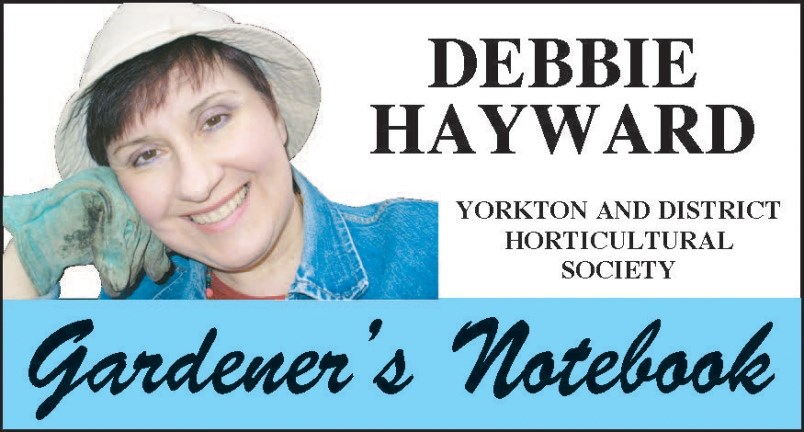It’s hard to believe that we have not met in more than a year, but the Yorkton and District Horticultural Society is still not having meetings. By this time our meeting season would be just about over, because guess what, we’re all eager to be out in our gardens, just as you are! We know that you are missing our famous spring plant sale, too! We’ll have to hope for next year instead! But please check out our website at www.yorktonhort.ca and see interesting garden photos and news.
Let’s have a quick cup of tea together. I know we are all praying for rain, and I did some homework about how we can garden better in dry spells. One thing that I learned was that we should use mulch, if we can, to conserve moisture. And that led into reading some articles about compost. So let’s combine the two and talk about compost as mulch.
Some of you might be envisioning large wooden bins or organic matter right now, but you can make compost in a container as small as an ice cream pail. There’s a basic recipe for compost, and whether you are making it in small batches or big batches, the ingredients and method is the same.
My darling parents were composting garden waste decades ago. Daddy built compost bins from wooden pallets. One was for the “fresh” ingredients, and the other, right beside it, was where the broken down compost was forked into until it became the brown gold that is so beneficial to gardens. Some of you might have the space to compost on that scale, but most of us want something smaller.
So first, let’s talk about the container. You can buy compost bins in various sizes, and they work just dandy. If you want to make your own, use a container with holes that allows for air circulation. It has to have a lid so that you can turn or “rotate it”, mixing up what is inside.
And what is inside? There are two ingredients for compost. One is “green”, things like vegetable and fruits peels, eggshells, and things like grass clippings (chemical-free only!). The green items give the compost the gift of nitrogen. Then, we use “brown” material, which gives carbon, and is dry organic matter like dried leaves and dried grass clippings. You keep these two ingredients in roughly equal proportions, layered in your composter. They have to be turned about once a week, and in time, the breaking-down process begins to yield beautiful compost. It may take several weeks or a few months to achieve compost, depending how big the pieces of organic matter are, but it is worth the wait.
Now, unless you have a real abundance of compost, many gardeners use compost as top-dressing, rather than working it into the soil. This becomes an ideal mulch, because it slowly disperses nutrients into the soil, but also helps hold in moisture.
And two points to remember: never put anything like meat or bones into compost. Don’t do that, ever. Very bad! And also, if your compost smells bad, you are doing something wrong. Chances are you will need more “brown” material to help balance out and dry out the moisture of the “green”.
If you really feel you can’t manage the idea of a composter, then you can incorporate your veggie peels, coffee grounds, and eggshells right into your garden or flower beds. Just dig a furrow, put them in, and cover with soil. You’ll be amazed at how quickly they “disappear”!
Thank you to Yorkton This Week for their amazing work. Let’s pray for health for all, and for the blessing of a nice gentle rain! Have a great week!




